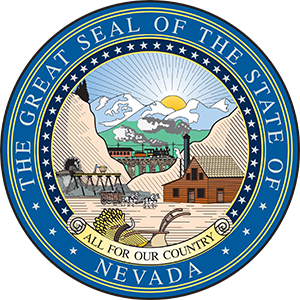If work on the federal Yucca Mountain nuclear waste project restarted immediately it would be 20 years or more before the proposed repository could begin receiving spent nuclear fuel.
Two teams of nuclear experts came to that conclusion after three years of studies and meetings
In March 2021, the Southern California Edison (SCE) Company released a massive three-volume report on options for the off-site relocation of spent nuclear fuel (SNF) from the San Onofre Nuclear Generating Station (SONGS).1 The company shut down the three reactors at the station in 2012.
All the spent nuclear fuel at SONGS—a total of approximately 1,600 metric tons of uranium in 3,855 spent fuel assemblies—is now in dry storage in 123 canisters. These plans — an action plan; a strategic plan; and a transportation plan — were prepared under the terms of a settlement agreement in 2017 between SCE, the majority owner and decommissioning agent for SONGS, and a group called Citizens’ Oversight. Two teams of nationally known experts developed the plans in collaboration with SCE and affected stakeholders.2
The experts began by acknowledging that “it is extremely difficult to predict whether and when the federal government might resolve the issue of restarting a national repository program focused on Yucca Mountain or on a new site. An additional source of uncertainty concerns federal funding to implement the program.”3
If the U.S. Department of Energy resumed the Yucca Mountain project — 65 miles from Clark County, Nevada’s populated areas — the first milestone would involve construction licensing and commencement of construction.
The experts estimated that “a decade or more would be needed to complete the licensing process for a repository at Yucca Mountain. This includes time needed for:
- Rehiring and retraining personnel and contract staff;
- Restarting activities at the Department of Energy and the Nuclear Regulatory Commission;
- Completing the adjudication of various contentions admitted by the Atomic Safety and Licensing Board;
- Reconsidering the environmental impact statement record of decision on the rail alignment from the existing mainline track to Yucca Mountain;
- Obtaining congressional approval for land withdrawal legislation;
- And for the Nuclear Regulatory Commission to issue construction authorization.
This estimate further assumes that the various contentions are resolved in favor of the project, the state of Nevada does not litigate the outcome, and the state issues necessary permits. Continued efforts by the state to block construction, on the other hand, could cause significant further delays.”4
The experts identified a second milestone involving “repository construction and operation. This involves the following steps:
- The Department of Energy to substantially complete construction of the repository and connecting rail line,
- The Department of Energy to prepare and submit a request for license issuance to receive and possess highly radioactive spent fuel assemblies.
- And for the Nuclear Regulatory Commission to review the the Energy Department’s request and issue the 10 CFR 63 operating license.
Constructing the repository and surface facilities; conducting pre-operational testing; and obtaining an operating license from the U.S. Nuclear Regulatory Commission — together with completing necessary transportation infrastructure — could require an additional decade or more.
This puts the timeframe for initial acceptance of spent nuclear fuel at two-to-three decades from the date that a national decision is reached to restart the Yucca Mountain project.
Given the current uncertainty about whether and when Congress might act to restart the repository program, these estimates suggest that a federal disposal facility is unlikely to be available as a destination for SONGS spent nuclear fuel until mid-century or beyond.”5
1 VOLUME I: ACTION PLAN FOR THE RELOCATION OF SONGS SPENT NUCLEAR FUEL TO AN OFFSITE STORAGE FACILITY OR A REPOSITORY https://s3.amazonaws.com/cms.ipressroom.com/339/files/20212/SONGS%20Action%20Plan.pdf; VOLUME II: STRATEGIC PLAN FOR THE RELOCATION OF SONGS SPENT NUCLEAR FUEL TO AN OFFSITE STORAGE FACILITY OR A REPOSITORY https://s3.amazonaws.com/cms.ipressroom.com/339/files/20213/SONGS%20SP%20Final%203-15-21%201.pdf; VOLUME III: CONCEPTUAL TRANSPORTATION PLAN FOR THE RELOCATION OF SONGS SPENT NUCLEAR FUEL TO AN OFFSITE STORAGE FACILITY OR REPOSITORY https://s3.amazonaws.com/cms.ipressroom.com/339/files/20212/SONGS%20CTP.pdf
2 Experts Team for SONGS SP (listed in Vol. I, page ii): Tom Issacs, Siting and Licensing, Chair; Dr. Allison Macfarlane, Siting and Licensing; Dr. Josephine Piccone, Radiation Detection and Monitoring; Richard C. Moore, Spent Fuel Transportation; J. Gary Lanthrum, Spent Fuel Transportation; Kristopher W. Cummings, M.S., Nuclear Engineering; North Wind Team for SONGS SP (listed in Vol. II, Appendix A): Elizabeth Helvey, Project Manager; Phillip Niedzielski-Eichner, Senior Project and Policy Advisor; Ernest Moniz, PhD, EJM Associates, Senior Advisor; Brian Gutherman, PE, Regulatory and Licensing Specialist; Joseph Hezir, EJM Associates, Strategic Planning and Option Analysis; Mary Woolen, LCSW, Stakeholder Engagement; James Voss, EURING, FNUCI, CENG, Engineering and Operations; Marika Tatsutani, Writer and Editor; Tom Hassenboehler, Legal Analyst;
Jeanette Pablo, EJM Associates, Legislative and Legal Analysis; Joseph Rivers, Rivers Consulting, Environmental Analysis; Steven Croley, Policy and Legal Analysis; Sam Savitz, EJM Associates, Analyst; Timothy Runyon, Transportation Regulatory and Facility Siting Specialist
3 SONGS Vol. II, Pp. 78-79.
4 Ibid., p. 79.
5 Ibid., Pp. 79-80.
Co-author Fred C. Dilger Ph.D., is executive director of the Nevada Agency for Nuclear Projects. Co-author Robert J. Halstead served as executive director of the Nevada Agency for Nuclear Projects from 2011 – 2020. Dr. Dilger and Mr. Halstead have more than 50 years combined experienced working on Yucca Mountain issues and have authored or co-authored more than 50 publications and reports on nuclear waste management, environmental impact assessment, and energy policy.
